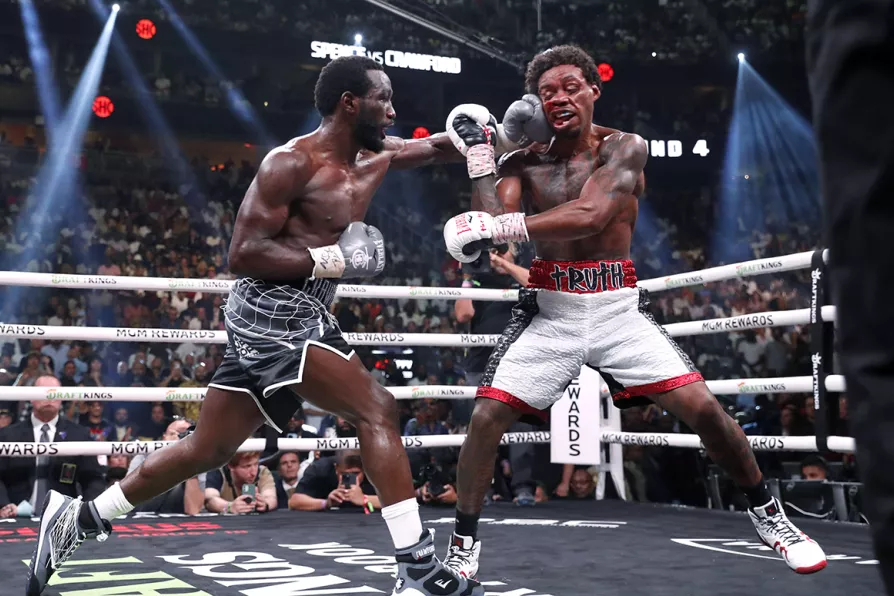JAMES NALTON on Munyua’s stinging success at the World Darts Championship

 Terence Crawford (left) connects with a punch to Errol Spence Jr during their welterweight title unification boxing bout, July 29, 2023, in Las Vegas
Terence Crawford (left) connects with a punch to Errol Spence Jr during their welterweight title unification boxing bout, July 29, 2023, in Las Vegas
OVER these past couple of weeks the good, the bad and the ugly of boxing has been on display as never before in such technicolour detail.
The good was provided by the much anticipated welterweight undisputed clash between Terence Crawford and Errol Spence at the Fortress in Las Vegas on July 29. Both fighters climbed into the ring as products of the kind of adversity you would instantly associate with a cliched Rocky script.
From the unforgiving streets of Omaha, Nebraska, Crawford is a man who survived being shot in the head one night in 2008 while sitting in his car counting the cash he’d just won from shooting dice under a street lamp. The guy who shot him was a sore loser, clearly, yet as Crawford later tells it: “It was my own fault. I should’ve taken the money and gotten out of there, instead of waiting to count it in the car.”

JOHN WIGHT tells the riveting story of one of the most controversial fights in the history of boxing and how, ultimately, Ali and Liston were controlled by others

JOHN WIGHT previews the much-anticipated bout between Benn and Eubank Jnr where — unlike the fights between their fathers — spectacle has reigned over substance












